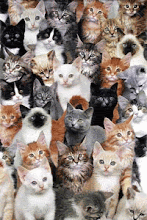These furry felines use body language almost exclusively to communicate. A cat’s whiskers convey their attitude. When they are angry or in a defensive stance, the whiskers lie flat against the face, where else, they point forward when a cat is feeling friendly and inquisitive.
A cat’s temperament can vary with their specific breed and level of socialization. A cat that was not socialized as a kitten may present as guarded, isolative and exhibit aggressive behaviors towards other cats and strangers. Such behaviors can be addressed using behavior modification plans. California Paws offers consultation services for behavioral problems you may be having with your kitty.
Purring is universally associated with a cat expressing contentment and happiness. However, it can also signify distress, anxiety or severe illness. As you learn to understand your cat, you will notice that it’s "meow” has numerous pitches, each one carrying a different meaning altogether. Some may be commands, others requests or complaints.
The tail also signifies how a cat is feeling. When it’s held high, this is a sign of happiness, a half-raised tail shows less pleasure and unhappiness is indicated when a tail is held low. When the tips of the tail twitches, a cat is usually angry or in hunting mode, while larger twitching means displeasure.
As a general rule, cats sleep more that most animals in order to conserve energy. Cats can sleep up to 20 hours in a 24 hour period. The daily duration of sleep varies, usually 12-16 hours but averages 13-14 daily.
A cat’s sense of smell is 14 times stronger than that of a human, allowing them to smell things you may not even be aware of. It also explains why your cat may run around the house at night prowling.
If you have a cat that is especially active at night, it is recommended to play with your cat for about 2 hours before your bedtime. It is crucial that play occurs at the same time daily. This assists in re-setting your cat’s circadian rhythm. As cats are by nature hunters, all play should include the six elements of hunting. These are Stalk, Run, Pounce, Catch, Kill and Eat. A snack will suffice and alert the cat that the cycle of play is complete. It then can shift focus into grooming and sleeping and this means a good night sleep for you!
California Paws offers expert cat care for you. Whether it is a visit in your home or in-home boarding you have the guarantee that an experienced cat professional will provide the best and most comprehensive care possible. Please visit us at www.californiapaws.biz and learn how we can assist you today. We welcome an email from you at californiapaws@yahoo.com. California Paws provides cat sitting and in-home boarding in the San Francisco area.
